Search results for: 'For'
-
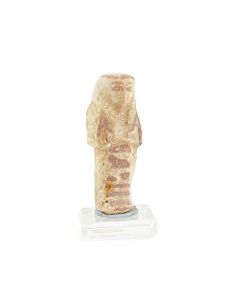 Ushabti for Henut-tawy
Ushabti for Henut-tawyThis Egyptian funerary statuette was found in the 19th century in the northern part of Abydos. It dates to the 22nd dynasty.
Price: on request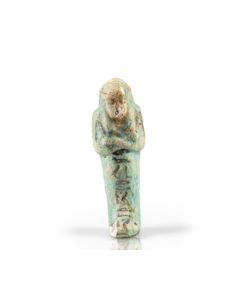 Ushabti for Bu-iri-eri-Renenutet
Ushabti for Bu-iri-eri-RenenutetEgyptian funerary figurine from the Third Intermediate Period. The owner's name is rarely attested and could hint to an origin in the Faiyum Oasis.
Price: on request Shabti for Ly-hotep-em-mut
Shabti for Ly-hotep-em-mutStunning Egyptian funerary figurine from the time of the 22nd dynasty. Formerly in the Rolls-Royce family collection.
Price: on request Ushabti for Ra-mes
Ushabti for Ra-mesThe mummiform funerary figurine dates to the Late Period of ancient Egypt, 26th to 31st dynasty. It is remarkable that it probably originates from the burial of two brothers, Ra-mes and Somtus-tefnacht.
Price: on request Ushabti for Somtus-tefnacht
Ushabti for Somtus-tefnachtThe mummiform funerary figurine dates to the Late Period of ancient Egypt, 26th to 31st dynasty. It is remarkable that it probably originates from the burial of two brothers, Somtus-tefnacht and Somtus-tefnacht.
Price: on request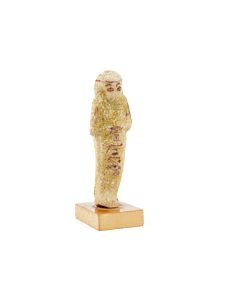 Egyptian ushabti for Nisi-ta-udjat-achet
Egyptian ushabti for Nisi-ta-udjat-achetInteresting figurine made of green faience with black paint. A typical funerary statuette from the Third Intermediate Period of ancient Egypt.
Price: on request Egyptian ushabti for Horus-in-Chemmis
Egyptian ushabti for Horus-in-ChemmisFunerary statuette made of turquoise faience with black paint and cute name inscription.
Price: on request Ptah-Sokar-Osiris statuette for Ta-scherit-Mehjt
Ptah-Sokar-Osiris statuette for Ta-scherit-MehjtLarge wooden statue representing the ancient Egyptian funerary deity Ptah-Sokar-Osiris. Nicely painted figurine including base from the Ptolemaic period of ancient Egypt.
€14,000 Shabti for Djed Khonsu
Shabti for Djed KhonsuExceptional funerary statuette from Deir el-Medina. Third Intermediate Period of Ancient Egypt.
Price: on request Egyptian ushabti for Pa-di-pepet
Egyptian ushabti for Pa-di-pepetThe tomb of Pa-di-pepet was discovered in 1893 west of the Pyramid of Teti at Saqqara. His funerary statuettes were given to important museums and into private collections. Dating to the reign of Pharaoh Psamtik I and his successor Necho II.
Price: on request Egyptian ushabti for Ra-mes
Egyptian ushabti for Ra-mesThe mummiform funerary figurine dates to the Late Period of ancient Egypt, 26th to 31st dynasty. It is remarkable that it probably originates from the burial of two brothers, Ra-mes and Somtus-tefnacht.
Price: on request Egyptian ushabti for Somtus-tefnacht
Egyptian ushabti for Somtus-tefnachtThe mummiform funerary figurine dates to the Late Period of ancient Egypt, 26th to 31st dynasty. It is remarkable that it probably originates from the burial of two brothers, Somtus-tefnacht and Somtus-tefnacht.
Price: on request Egyptian ushabti for Somtus-tefnacht
Egyptian ushabti for Somtus-tefnachtThe mummiform funerary figurine dates to the Late Period of ancient Egypt, 26th to 31st dynasty. It is remarkable that it probably originates from the burial of two brothers, Somtus-tefnacht and Somtus-tefnacht.
Price: on request Egyptian ushabti for Somtus-tefnacht
Egyptian ushabti for Somtus-tefnachtThe mummiform funerary figurine dates to the Late Period of ancient Egypt, 26th to 31st dynasty. It is remarkable that it probably originates from the burial of two brothers, Somtus-tefnacht and Somtus-tefnacht.
Price: on request Egyptian ushabti for Somtus-tefnacht
Egyptian ushabti for Somtus-tefnachtThe mummiform funerary figurine dates to the Late Period of ancient Egypt, 26th to 31st dynasty. It is remarkable that it probably originates from the burial of two brothers, Somtus-tefnacht and Somtus-tefnacht.
Price: on request Egyptian ushabti for Somtus-tefnacht
Egyptian ushabti for Somtus-tefnachtThe mummiform funerary figurine dates to the Late Period of ancient Egypt, 26th to 31st dynasty. It is remarkable that it probably originates from the burial of two brothers, Somtus-tefnacht and Somtus-tefnacht.
Price: on request Egyptian ushabti for Somtus-tefnacht
Egyptian ushabti for Somtus-tefnachtThe mummiform funerary figurine dates to the Late Period of ancient Egypt, 26th to 31st dynasty. It is remarkable that it probably originates from the burial of two brothers, Somtus-tefnacht and Somtus-tefnacht.
Price: on request Egyptian ushabti for Ra-mes
Egyptian ushabti for Ra-mesThe mummiform funerary figurine dates to the Late Period of ancient Egypt, 26th to 31st dynasty. It is remarkable that it probably originates from the burial of two brothers, Ra-mes and Somtus-tefnacht.
Price: on request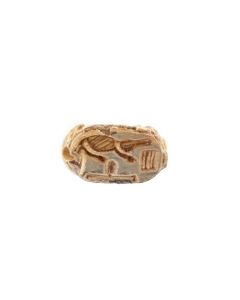 Egyptian scarab for Sobekhotep
Egyptian scarab for SobekhotepThe back of the scarboid body is shaped like a lying cat. New Kingdom of ancient Egypt, around 1000 BC.
Price: on request Funerary statuette for Princess Henuttawy
Funerary statuette for Princess HenuttawyThe Egyptian shabti is from the daughter of Pinudjem II who ruled Egypt during the Third Intermediate Period. It was excavated in the 1840ies at the Ramesseum.
€12,400 Egyptian ushabti for Viceroy Hori
Egyptian ushabti for Viceroy HoriOne of only 30 known funerary statuettes from the tomb of Hori I, King's son of Kush. Viceroy of Kush in Nubia during the reign of the pharaohs Ramesses III and IV. An exhibited and repeatedly published piece.
€8,850 Egyptian funerary figurine for Nefer-hotep
Egyptian funerary figurine for Nefer-hotepInteresting ushabti from Memphis dating to the late 19th Dynasty, New Kingdom. The owner was an official from the Temple of Ptah.
Price: on request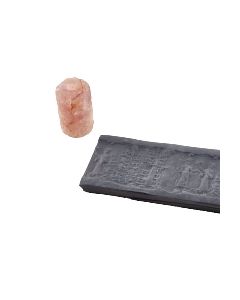 Elamite cylinder seal for Shuk-Kuku
Elamite cylinder seal for Shuk-KukuFantastic seal carved out of amethyst. It shows his owner Shuk-Kuku with the goddess Ninsianna. Five columns of Elamite cuneiform inscription frame the scene.
Price: on request Elamite cylinder seal for Aham-Lurshi
Elamite cylinder seal for Aham-LurshiEngraved in fine detail and well preserved. Scene with three gods. Three columns of cuneiform inscription name the owner Aham-Lurshi. Approx. 1900 to 1600 BC.
Price: on request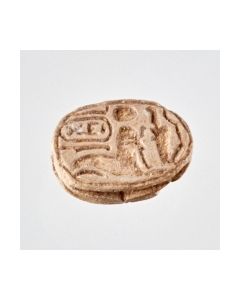 Memorial scarab for Thutmose III
Memorial scarab for Thutmose IIIA royal sphinx and Maat, the goddess of truth and justice adorn the lower side. Above them is the cartouche of Mencheperre. The piece is probably from the regin of Ramesses IV or V.
Price: on request Neolithic axe mounted for museum display
Neolithic axe mounted for museum displayThe stone tool is from the European Neolithic. A special feature is the museum-quality custom made shaft which gives a great impression of the tool's former mounting.
Price: on request Old Babylonian Cylinder Seal for Aham-arshi
Old Babylonian Cylinder Seal for Aham-arshiFantastic private seal with a rare depiction of the god Amurru. 1900 to 1600 BC.
Price: on request Old Babylonian cylinder seal for Ipqatum
Old Babylonian cylinder seal for IpqatumStunning historical document with three columns of cuneiform inscription naming the original owner and the Babylonian storm god Adad.
Price: on request Roman glass insert for a pendant
Roman glass insert for a pendantTypical glass jewellery from one of the Eastern Mediterranean glass factories. This popular type was made with a motif stamped into each side of the glass disc. Late 4th to 5th century AD.
Price: on request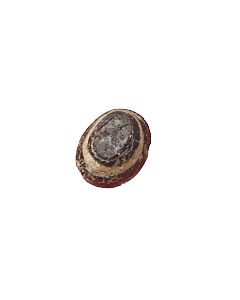 Roman glass insert for a fingerring
Roman glass insert for a fingerringBanded glass imitating natural agate. The piece was once inserted into jewellery from the Roman Imperial period.
Price: on request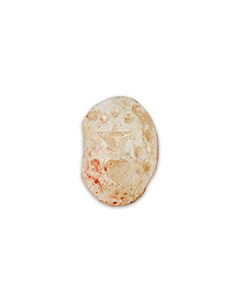 Roman intaglio with mixing vessel for wine
Roman intaglio with mixing vessel for wineThe Roman glass paste shows a tall vase surrounded by vine leaves. It is a mixing vessel for wine.
Price: on request Bronze Age casting mould for a chisel
Bronze Age casting mould for a chiselOne half of a stone mould for bronze casting. The equipment is from a workshop of the 2nd Millennium BC, probably from the Carpathian Basin. From the famous Guttmann Collection. This mould was published in a work by Born and Hansen.
€1,400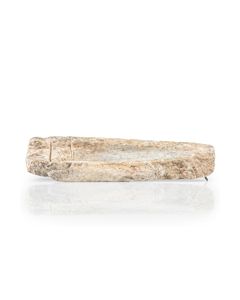 Bronze Age casting mould for a chisel
Bronze Age casting mould for a chiselOne half of a stone mould for bronze casting. The equipment is from a workshop of the 2nd Millennium BC, probably from the Carpathian Basin. From the famous Guttmann Collection. This mould was published in a work by Born and Hansen.
Price: on request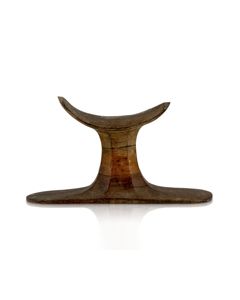 Egyptian headrest for a funeral or daily use
Egyptian headrest for a funeral or daily useThe well-preserved wood object is a rare example for this funenary ritual. The high quality piece was made around the Amarna Period in the late 18th dynasty of ancient Egypt.
€3,650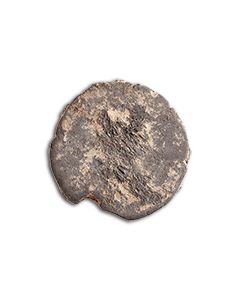 End piece for ancient terracotta forger's mould
End piece for ancient terracotta forger's mouldThe perfectly preserved mould was used to counterfeit coins with a FEL TEMP REPARATIO reverse and was used frequently. From time of Constantius II (337-361 AD) or slightly later.
Price: on request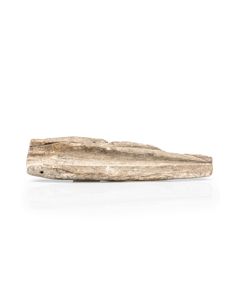 Bronze Age casting mould for a lance head
Bronze Age casting mould for a lance headOne half of a stone mould for bronze casting. The equipment is from a workshop of the 2nd Millennium BC, probably from the Carpathian Basin. From the famous Guttmann Collection. This mould was published in a work by Born and Hansen.
€1,400

